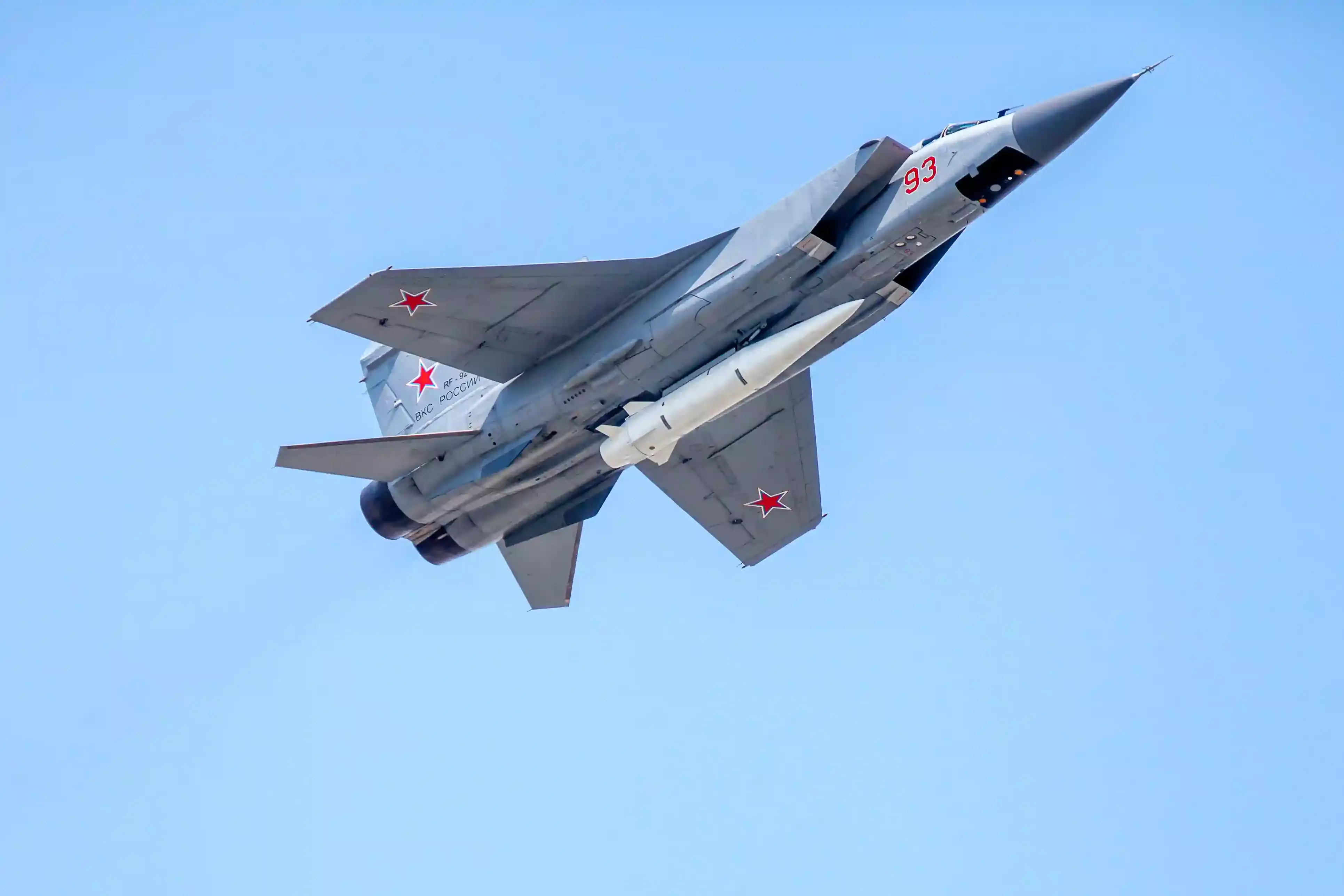Explained: What's a Hypersonic Missile that Russia Claims to Have Used in Ukraine
The missile, which was reportedly used to destroy an ammunition depot in Ukraine, can fly at least at five times the speed of sound

The Russian Military has reportedly launched a high-precision 'Kinzhal' hypersonic missile against Ukraine. The Russian Ministry of Defence tweeted a video showing destruction caused due to a "high-precision missile strike".
"Destruction of a weapons depot of the Ukrainian armed forces by a high-precision missile strike. We can see the exact hit of an underground hangar with weapons and ammunitions," read the translated tweet of the Russian ministry.
Al Jazeera reported that Russian defence ministry spokesman Major General Igor Konashenkov said the Kinzhal (Dagger) hypersonic missile hit a Ukrainian fuel depot in Kostiantynivka near the Black Sea port of Mykolaiv.
To understand what hypersonic missiles are and how they are used, FactChecker referred to descriptions provided by Stockholm International Peace Research Institute, PartyYard Military, and BrahMos Aerospace.
What are Hypersonic Missiles?
The term hypersonic means that the entity moves at a minimum of five times the speed of sound in air. This means a hypersonic missile can travel at five times the speed of sound (also referred to as Mach 5) and higher, according to PartyYard military which is a worldwide supplier of Original Equipment Manufacturer parts.
The speed of sound in air is 1234.8 kilometre per hour (kmph), and hypersonic missiles are capable of traveling at a minimum speed of 6,174 kmph. The newsmaking Russian Kinzhal missile, however, is allegedly capable of achieving Mach 10 speeds (10 times the speed of sound) and reaching distances up to 1200 miles.
But there is a point of contention when it comes to the definition of 'hypersonic speed', and consequently, what a 'hypersonic missile' is, according to Stockholm International Peace Research Institute. The speed of sound not only depends on the chemical composition of the gas (air on Earth) that the sound is moving through but also on its temperature, both of which change with altitude. This results in "different measurement of what the speed of a missile moving with Mach 5 is, simply depending on the altitude that the missile is flying at".
The Kinzhal missile's main advantage is that it can be launched from MiG-31 fighter jets, which gives it longer range and ability to attack from various directions, found Jyri Lavikainen, a research fellow at Finnish Institute of International Affairs. In his research, published in Center for Strategic and International Studies, Lavikainen mentioned that the Kinzhal is typically described as a weapon intended to destroy "high-value ground targets, such as missile defense sites".
Types of Hypersonic Missiles
Hypersonic Missiles are classified into Hypersonic Cruise Missiles and Hypersonic Glide Vehicles. Hypersonic Glide Vehicles utilise re-entry vehicles, which means that they leave the Earth's atmosphere and then re-enter it and glide towards their payload destination.
Cruise missiles fly within the earth's atmosphere, use jet engine technology, and are unmanned self-propelled guided vehicles that "sustains flight through aerodynamic lift for most of its flight path", according to BrahMos Aerospace.
Cruise Missiles are also classified into three different speed categories - Subsonic (speed less than that of sound), Supersonic (speed greater than that of sound but up to 3 Mach), and Hypersonic.
Apart from Russia, news reports show that other countries currently testing or in possession of hypersonic missiles are North Korea, China, and the USA. The US is actively pursuing the development of hypersonic weapons that fly at speeds of at least Mach 5.


